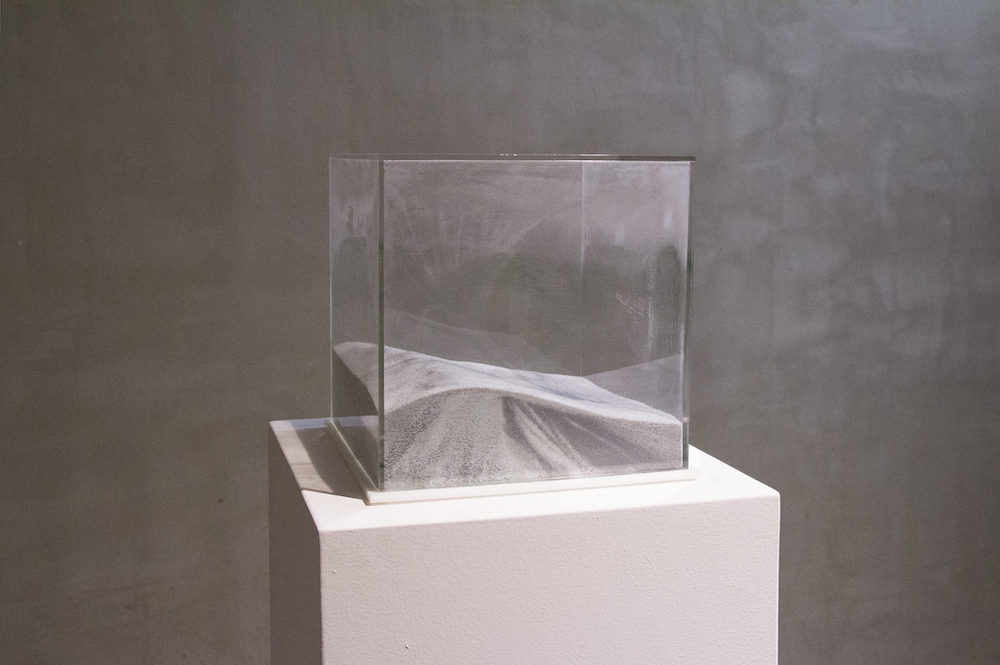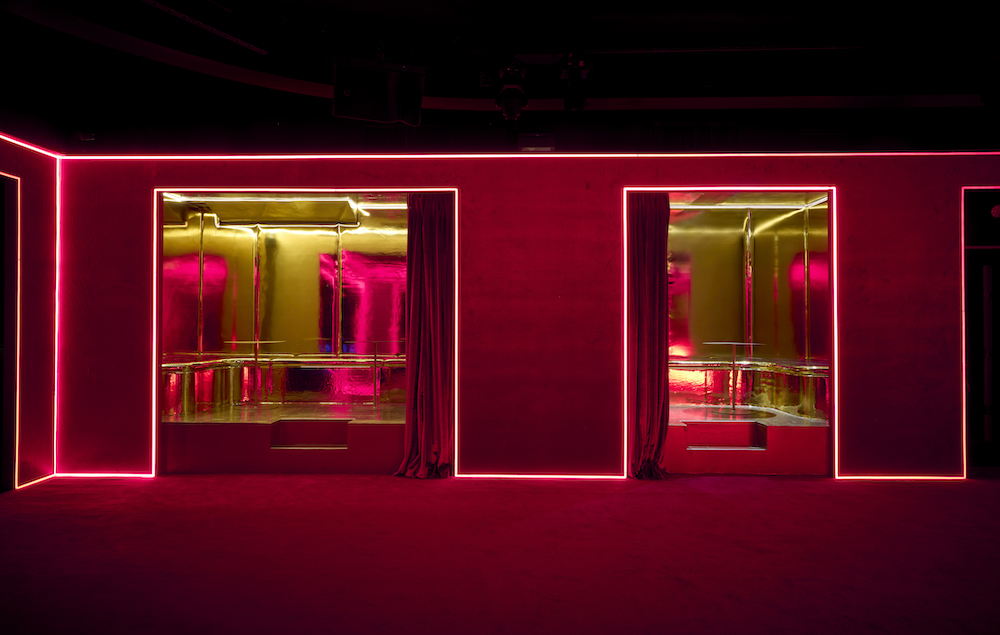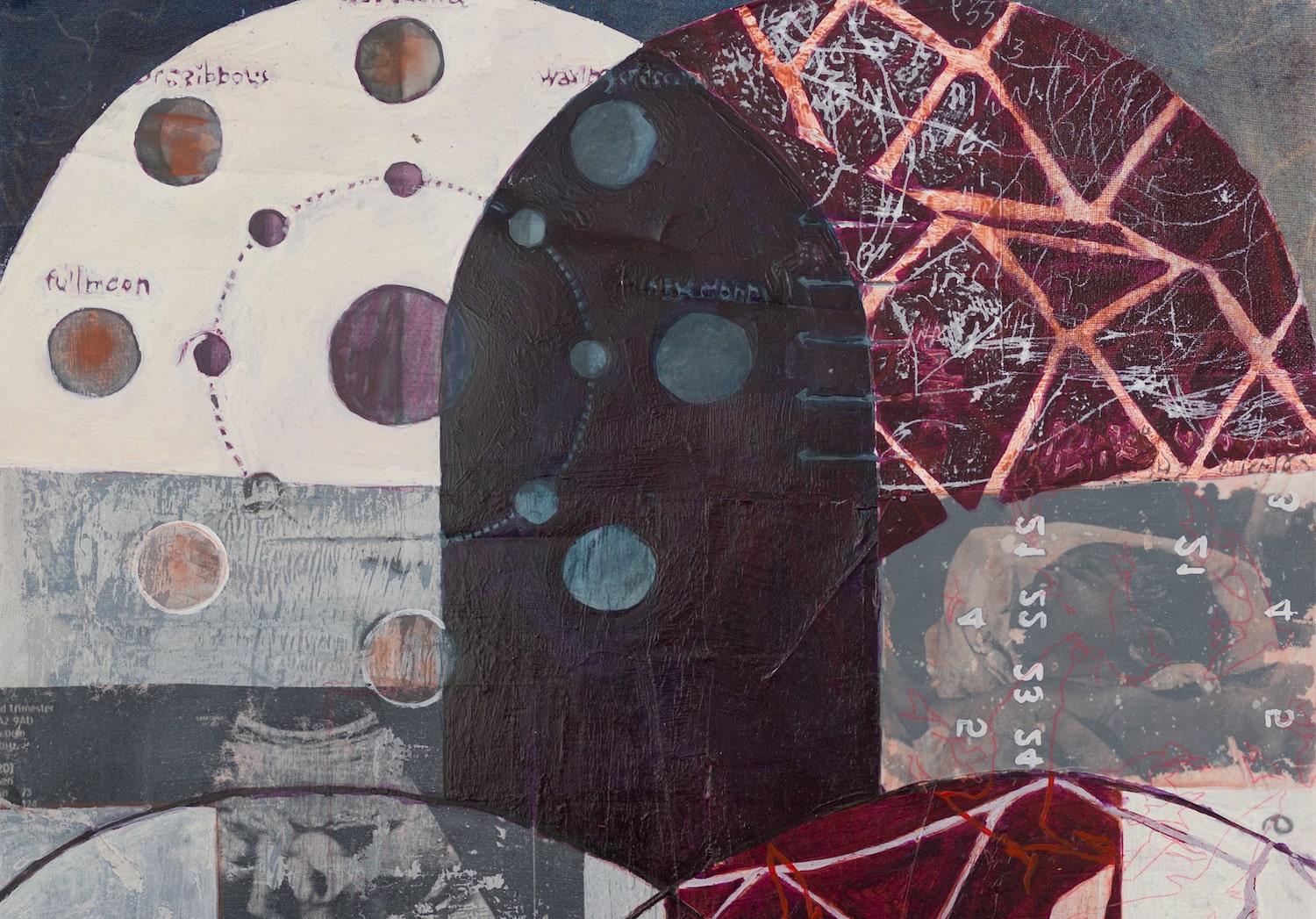“Phantom Power” at Microscope Gallery
Kamari Carter’s exhibition at Microscope Gallery, “Phantom Power” was on view this spring in New York, from April 6—May 13, 2023. It was Carter’s first solo show in Chelsea and presented new and recent works that contemplatively yet incisively confronted American mythologies. The works largely explored how power lives in everything, from mindless chatter and subliminal messaging to more obvious displays of violence. But, as is Carter’s way, they were not prescriptive: they presented images and audio that question and challenge, ultimately leaving the viewer to self-reflect on their own terms.
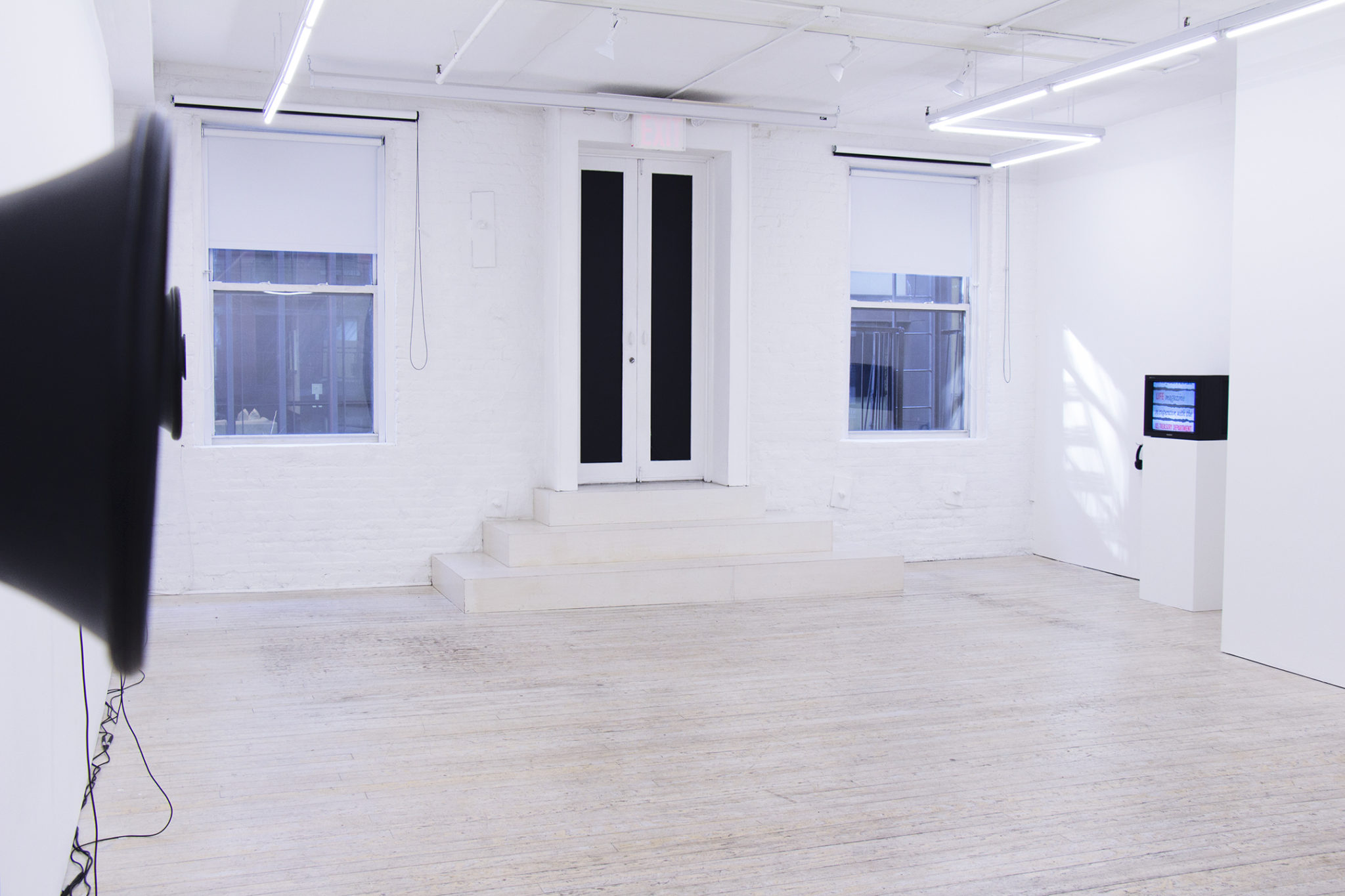
Installation view of Kamari Carter’s “Phantom Power” at Microscope Gallery.
The small, powerful selection dealt with the slow and noisy histories that precede moments of seemingly spontaneous brutality. Event Horizon (2023), for example, featured 10 megaphones mounted on a wall—each of broadcasting live-feed police radio transmissions from areas with the highest number of deaths of Black Americans by the police. Sidling up to the megaphones, we heard voices talking over each other, patches of static, and a closed circuit of police jargon.
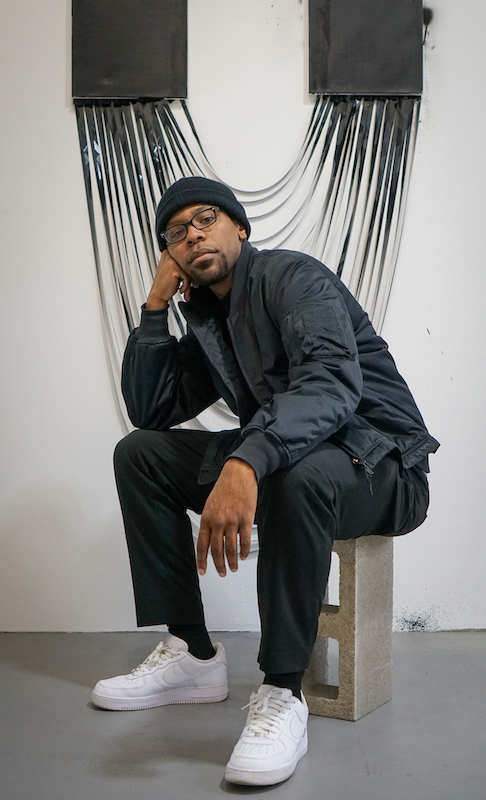
Kamari Carter, portrait by Carolina Porras Monroy from Mass Moca.
“There’s this weird aspect of the work that is voyeuristic and at a distance. It’s a unidirectional conversation that you are listening in on,” said Carter. In 2023, one would expect more clarity, more coherence, but these transmissions are both difficult to hear and to understand. “It almost feels like it doesn’t really matter whether or not you’re listening, you’re not really in on the conversation, no matter how desperately you want to be.”
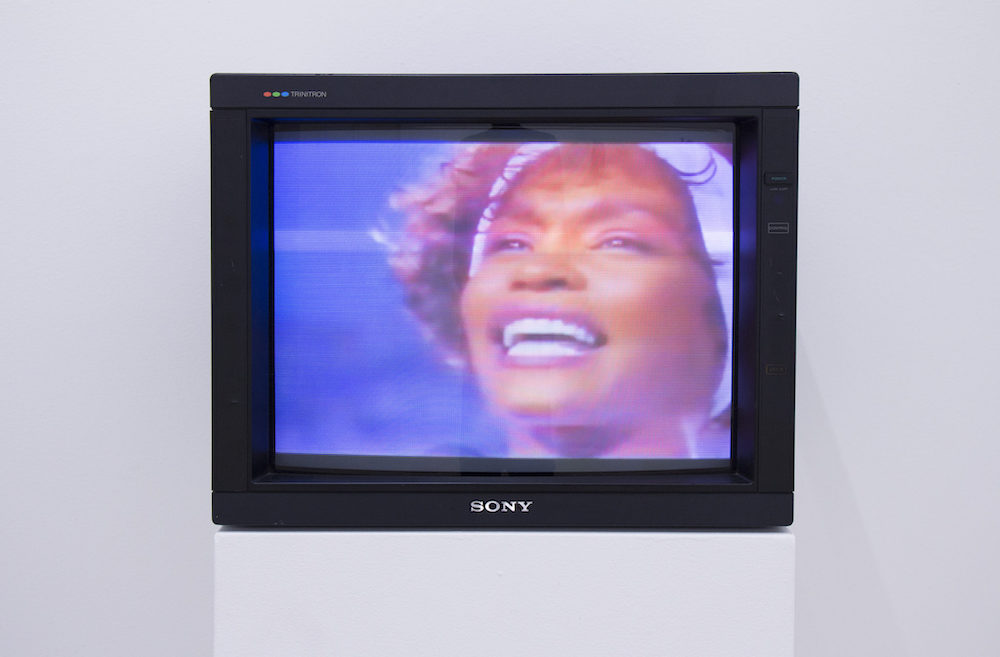
Kamari Carter, “Original Programming,” 2023, HD single-channel video, color, sound 6 minutes 20 seconds, courtesy of the artist and Microscope.
“Who gets to be assumed American?”
Original Programming (2023) displayed the kind of Americana that we are supposed to consume and immediately comprehend. Carter’s carefully edited film collated Whitney Houston singing the national anthem, along with archival footage of didactic films, like The Egg and Us (1952), which is about the U.S. Treasury, and “the secret of American property.” This, you feel, is something that you have imbibed again and again. “So much of the idea behind the show is thinking about Americana more objectively,” said Carter. “For a while I’ve continued to ask this question: who gets to be assumed American? What does it mean to be treated as American?”
That point became more precise in watching A Ballad for Black Blood (2020). The film showed American flags waving backward, birds crossing the sky, or bubbles quickly advancing across a screen—juxtaposed with the transmissions recorded during the arrest of 23-year-old Elijah McClain, who was killed by the police. A Ballad for Black Blood is the highway of death, but it also represented a form of surface tension, Carter’s expression of resistance. “I needed to figure out a way to tell a compelling narrative about this feeling of submersion and pressure that I experience as a Black body in America, without using visual trauma,” he said.
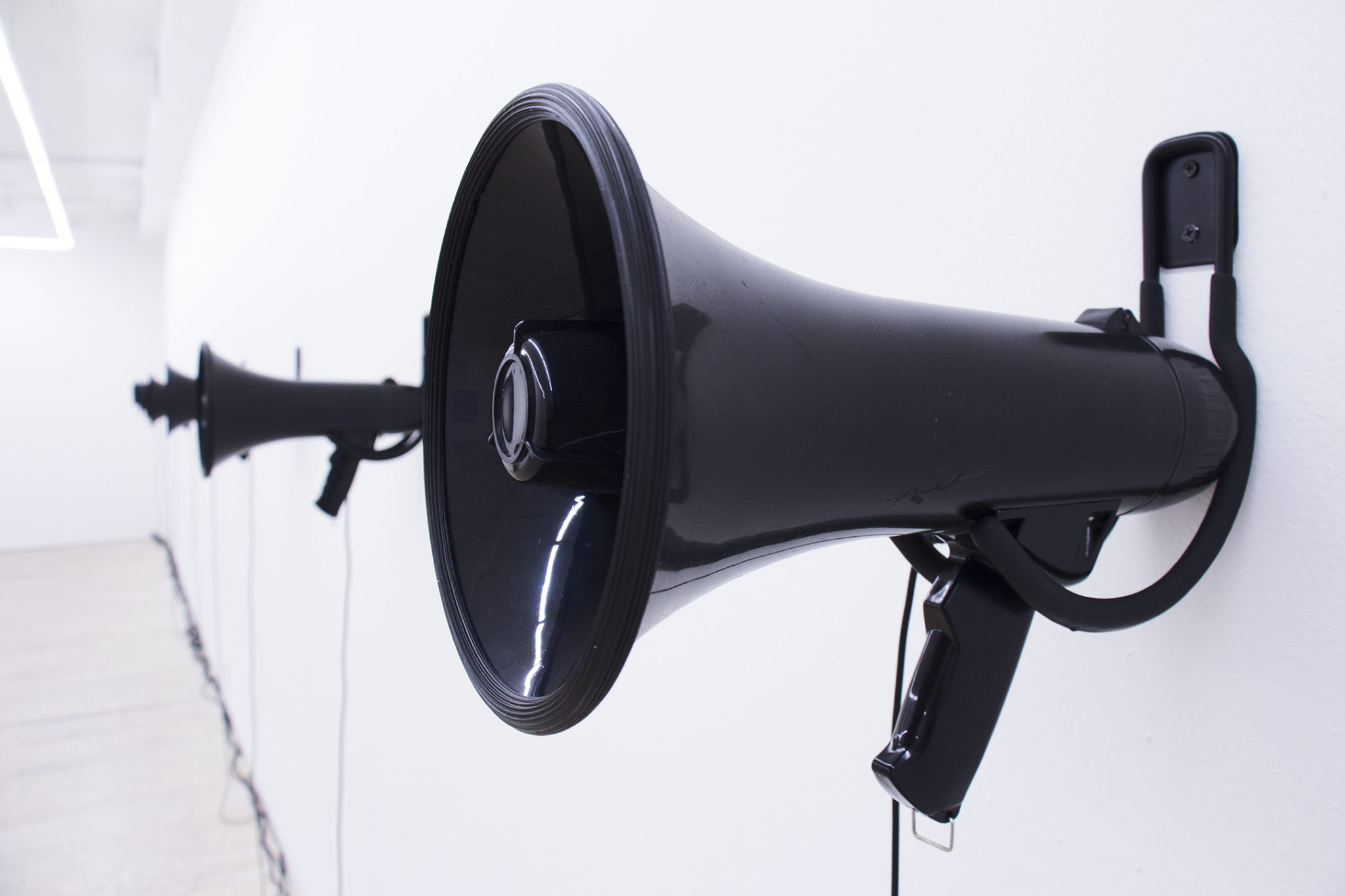
Kamari Carter, “Event Horizon,” 2023, 10 black megaphones, 10-channel live audio broadcast, courtesy of the artist and Microscope.
The last work, I know I’ve hurt you, I’m sorry (2022) addressed the final moments of the Jonestown cult, which after two decades, culminated in the murder-suicide of almost one thousand people, including 304 children. The members ultimately died by consuming poisoned grape Flavor Aid, and in the exhibition, Carter poured the contents of 304 grape Kool-Aid packages into a transparent box. Behind us, a speaker played excerpts from the “death tape,” including choice phrases like “there’s nothing to worry about” and “keep your children calm,” as babies cried out in the background. The result was something deeply upsetting—incomprehensibly so. We wondered, how, how did this happen? The answer lurked elsewhere in the gallery: how does any form of coercive violence gain widespread acceptance?
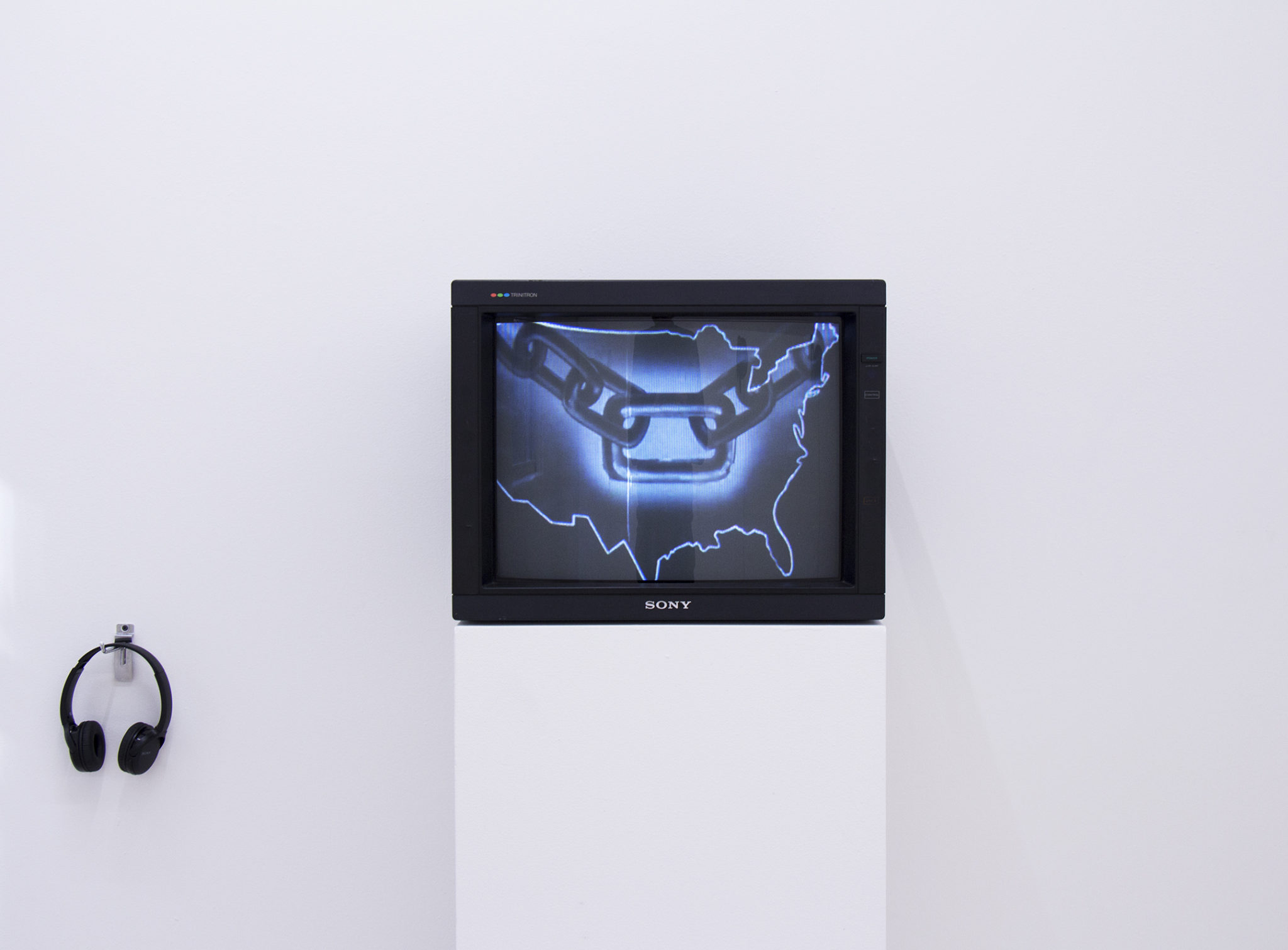
Kamari Carter, “Original Programming,” 2020, HD single-channel video, color, sound 8 minutes 17 seconds, courtesy of the artist and Microscope.
Carter’s approach was essayistic and minimalist, allowing the viewer to slowly follow along, construct, and deconstruct their own experiences in relation to his sensorial prompts. What we end up with is a profound sense of accumulation—the noises, the visuals, the little moments, and silences that all add up to a specifically American form of systemic racism. When American mythology is perpetuated, what do we hear and what do we tune out? In what ways does American propaganda feel almost cultish?
“It is this accumulation that makes it feel like it has such totality that you can’t tackle the issue,” said Carter. “I want to encourage everyone and anyone that encounters the work to collectively tackle these issues. Just as much totality as they have, so do we.”



